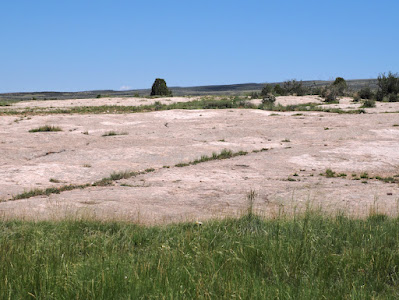 |
| Not what you expected? |
Members of a small impromptu focus group thought not. "Ma'am, a cowboy needs more than a flower to be delighted" explained one fellow. Another—Wyoming-born-and-raised—also was skeptical. "Cowboys don't like flowers unless their cows eat 'em."
Well, pardner ... cows DO eat 'em.
Animals graze and browse on the tastiest things available, so aggies and wildlifers rate plants as to palatability. However taste varies among species. And for a given beast, palatability depends on time of year, available moisture, and other site characteristics. But in general cows and elk find Scarlet Globemallow fairly tasty, while horses don't. Sheep love it (palatability excellent). Some small birds eat the fruits; bison, prairie dogs, jack rabbits, and various rodents utilize the plants for forage. It's especially palatable and important for pronghorn antelope.
 |
| This gal seemed to be curious as to what I was doing but then went back to eating. |
 |
| Pronghorn's Delight, thriving next to a dirt road in open sunny habitat. |
 |
| Stellate hairs make the foliage gray-green. Matt Lavin on Flickr. |
 |
| Many styles emerge from tubes of joined stamens, typical of the mallow family. Matt Lavin on Flickr. |
Sources
Biodiversity Institute, Wyoming Native Gardens. Scarlet Globemallow, Cowboy's Delight
NRCS USDA 2009. Plant Guide, Scarlet Globemallow, Sphaeralcea coccinea. PDF
Southwest Colorado Wildflowers. Sphaeralcea












